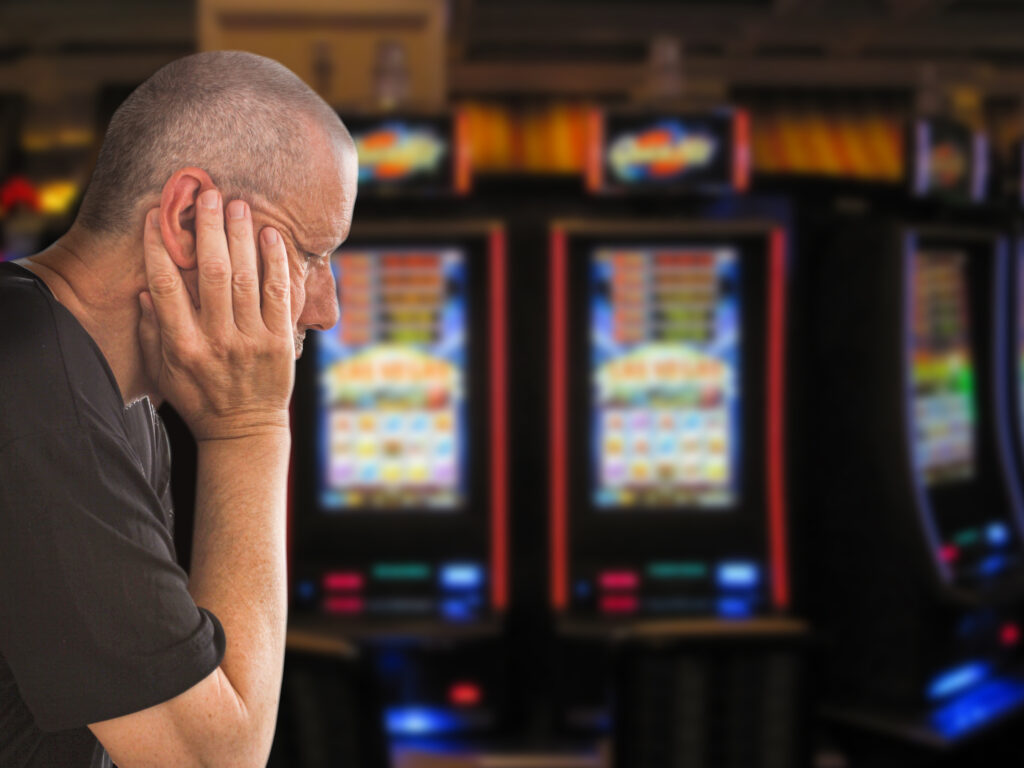While understanding of gambling disorder has improved drastically in the past 25 years, further research is urgently needed to determine the efficacy of harm reduction strategies and treatments in the long term.
Gambling disorder effects approximately 1% of adults in Australia and New Zealand, with an additional 3–5% of the population at risk.
Every year in Australia, $24 billion is gambled via lotteries, wagering, sport and casino gambling, and, most significantly, through poker machines, which account for more than half of Australia’s gambling problems.
A narrative review published in the Medical Journal of Australia has summarised our current understandings of gambling disorder, and has called for further research into treatment therapies and long term harm reduction.
“This narrative review article summarises recent developments in the identification and management of gambling disorder and the continued or emerging research gaps in the available evidence base,” Associate Professor Simone Rodda of Auckland University of Technology and co-authors wrote.’

Diagnosing gambling disorder
Gambling disorder is a recognised psychiatric disorder akin to other behavioural addictions such as alcohol and substance use disorders, and can affect people from a diverse range of sociodemographic groups.
“The DSM-5 diagnostic criteria include nine indicators, such as needing to gamble more money to get the same effect, loss of control, repeated attempts to change, preoccupation, and gambling to escape negative mood,” the authors wrote.
“Criteria also relate to the detrimental impact on relationships or employment and a reliance on others to relieve financial situations, as well as chasing losses in the hope of regaining the amount spent.”
One in three people with a gambling disorder experience a lifetime of suicidal ideation, with 10% reporting suicide attempts.
Anyone can experience gambling disorder, but known risk factors include having difficulty in school, being male, misuse of alcohol or illicit substances, and having family members who have had gambling problems.
There is a higher prevalence of gambling disorder for Aboriginal and Torres Strait Islander peoples, due to the effects of colonisation, poverty, addiction and loss of cultural connection.
“More recently, the application of a public health lens in Australia and New Zealand has shifted the focus of gambling disorder and problem gambling from the individual patient to the identification of gambling harm in recognition that efforts targeting the prevention of harm may be more effective as they potentially influence a larger segment of the population,” the authors wrote.
“Gambling harm, which can range from mild to significant and be chronic or episodic, can affect anyone, including family and friends and the wider community.”
Management and treatment
The authors noted that levels of engagement with treatment for gambling disorder are low, due in part to the embarrassment and stigma associated with gambling disorder, with many individuals preferring to self-manage the problem.
When treatment is sought, it is usually via national helplines or online services, which offer free counselling, or via disclosure to health care services.
Various screening tools are available for clinicians to identify the presence of gambling disorder, such as the nine-item Problem Gambling Severity Index (PGSI), the short-form PGSI, and the Lie/Bet questionnaire.
“Although these screening tools are brief and easy to administer, evidence on their classification accuracy, particularly in clinical settings, is still emerging,” the authors wrote.
“There are challenges with embedding gambling screening tools in clinical practice settings, including time, priorities and knowledge of appropriate tools.”
Treatments with the strongest evidence base are psychological therapies, in particular cognitive behavioural therapy (CBT) and motivational interviewing.
“To reduce the desire to gamble, CBT identifies and changes thinking patterns where the person believes they can win at gambling by selecting lucky numbers, believing that a win must follow a series of losses, or trying to recoup losses by more gambling,” the authors wrote.
“Over time, the person gradually has increased self-efficacy to maintain change and reduced expectations that gambling is a way to make money or relieve negative mood states.”
The authors found mixed evidence on the effectiveness of medications for gambling disorder, with trials showing opioid antagonists and antipsychotics may improve symptom severity in the short term, but have no impact on gambling behaviours in the long term.
There is also variable evidence for the effectiveness of self-help treatment, such as self-help strategies, online and phone apps, and self-help groups like Gamblers Anonymous.
“Self-help treatment has become widely available to address barriers to treatment access and is scalable, has a larger reach than in-person treatment, is cost effective, and can be integrated into most service types including allied health and primary care settings,” the authors noted.
“Self-management tools have variable levels of evidence despite their widespread use. For example, self-exclusion from gambling venues is a tool used by about 15% of people with gambling disorder but there are only a few longitudinal studies and no clinical trials assessing its long term effectiveness.”
Research gaps remain
Research into gambling disorder has expanded in the past 25 years, as Australia and New Zealand introduced levies on gambling operators where a proportion of gambling revenue must be spent on harm minimisation and research.
Despite this, gaps remain in our knowledge of gambling treatment outcomes.
“There is a gap between what services provide and evidence-based interventions and there are very few pragmatic trials done on treatment services,” the authors wrote.
“One of the largest and most vital gaps is the absence of high quality evaluations that assess treatment effectiveness over the longer term, particularly in relation to treatment in community settings.”
The authors argue that a lack of long term evaluation means gambling disorder relapse is not being identified or addressed.
Further investigation is also needed into psychological interventions that have shown promise for other addictive disorders, such as acceptance and commitment therapy, dialectical behaviour therapy and eye movement desensitisation and reprocessing therapy.
“The first question that is asked in treatment outcome research is ‘What works?’. In line with a translational approach, however, we should not just be examining what works, but also the how, why, and for whom our interventions work so we can develop more efficient and effective interventions to reduce gambling harm,” the authors concluded.
Read the narrative review in the Medical Journal of Australia.
Subscribe to the free InSight+ weekly newsletter here. It is available to all readers, not just registered medical practitioners.

 more_vert
more_vert